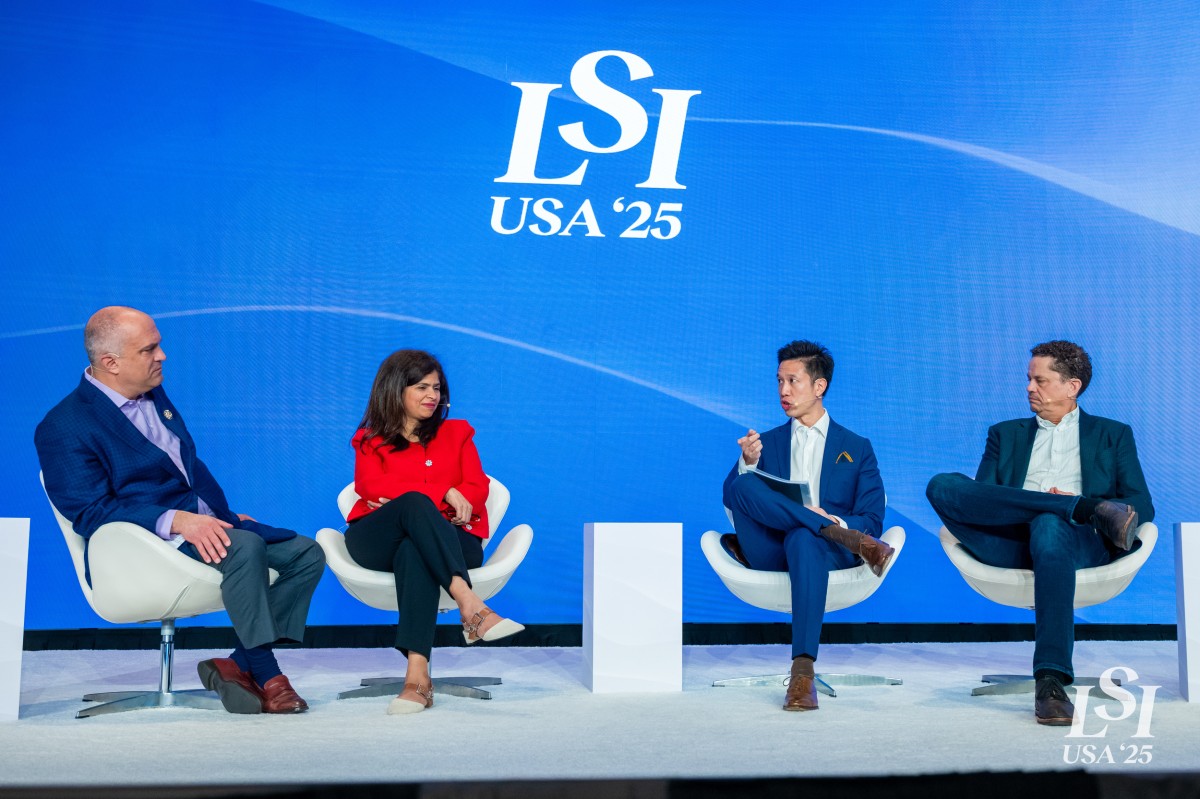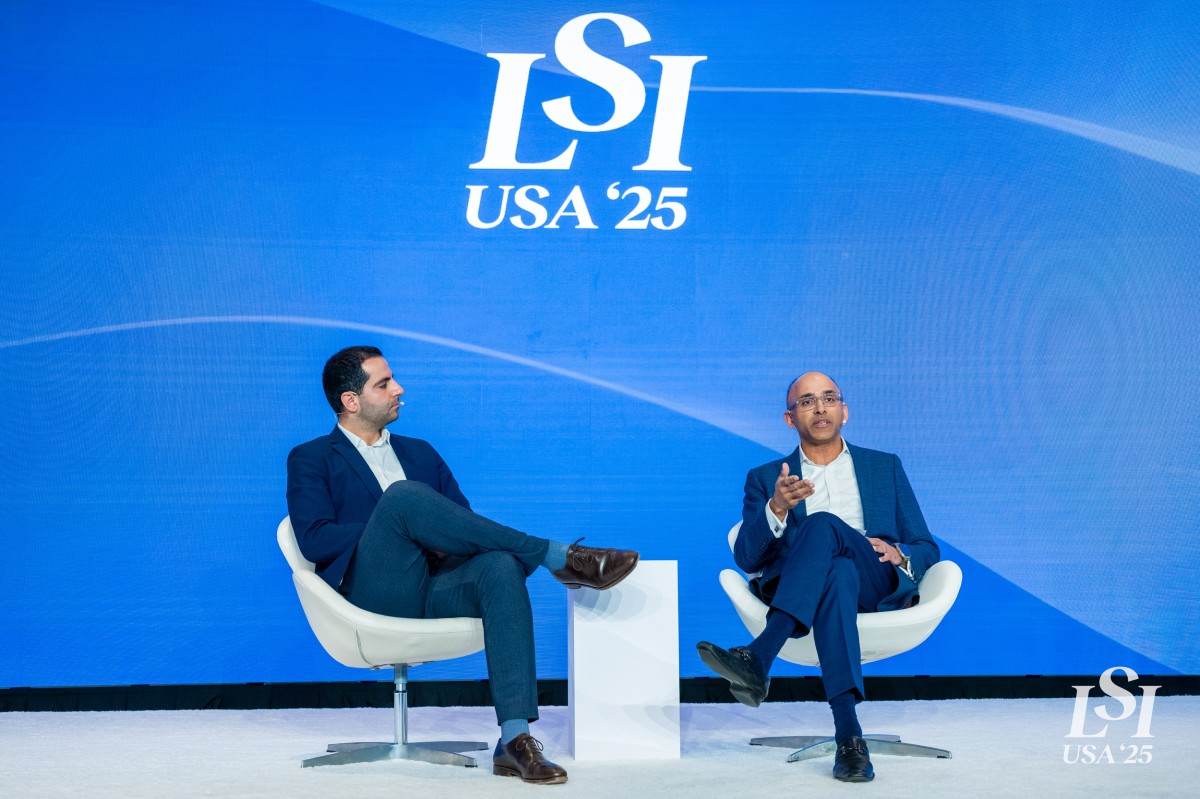
Robotic massage therapy is emerging as a novel category at the intersection of healthtech, automation, and consumer wellness. At its core, it refers to the use of autonomous robotics to deliver targeted, consistent, and programmable soft tissue manipulation—what many would traditionally call massage therapy. And one company, Aescape, is pioneering this future.
Founded by serial entrepreneur Eric Litman, Aescape (pronounced “Escape,” derived from Aesculapius, the Roman god of healing) has created an intelligent robotic system that delivers therapeutic massage experiences with precision and personalization, while sidestepping many of the inconsistencies that come with human touch. The company’s systems are already live in locations like Equinox, Lifetime Fitness, Four Seasons, Ritz-Carlton, and the training facilities of professional sports teams.
At The LSI USA ’25, Litman joined LSI’s Henry Peck for a fireside chat to reflect on the entrepreneurial journey, the technical challenges of robotics in wellness, and how Aescape is shaping the next decade of consumer care.
From Pain Point to Product: The Origin of Aescape
The story behind Aescape is as personal as it is innovative. Litman, who has spent most of his career building tech-forward companies, described a painful neck injury that left him debilitated. “For about eight months, I needed someone to take an elbow and dig it into one spot on my shoulder blade for an hour a day just to survive,” he said.
He traveled the globe—Jakarta, London, New York—seeking relief. However, regardless of price point or spa setting, the results were inconsistent. “I’d ask for an elbow here for an hour. Five minutes later, they’re rubbing my glutes,” Litman joked. That gap between need and delivery sparked the initial idea: What if you could automate massage?
Skeptics abounded. Investors said robotics would never work in massage therapy. Friends in the field—including a co-founder of Kiva Systems (now Amazon Robotics)—warned of technical impossibility. But for Litman, the friction was fuel. “That was just catnip,” he said. “It got me to really dive in and develop a hypothesis around two trends: the coming inflection point in physical automation, and the rising consumer focus on the human body.”
Seven years of R&D later, Aescape launched.
Why It Doesn’t Look Like a Robot—and That’s the Point
Many people assume robotic massage therapy means a humanoid robot replacing a masseuse. Aescape took a different path. The system features dual robotic arms operating in unison on either side of the user’s body, mounted above a massage table with integrated 3D body scanning and touchscreen controls.
“There’s a very good reason forklifts don’t look like people,” Litman said. “Form should follow function. We can apply equal force on both sides of the body. We can integrate sensors and create repeatable, personalized experiences that a humanoid form just wouldn’t enable.”
This precision isn’t just novel—it’s foundational. The robot learns from user preferences over time. Each treatment session adapts and improves based on prior feedback, creating a closed feedback loop with every session.
Engineering Experience: Branding and Booking in the Age of AI
Litman didn’t just want to build a robot. He wanted to build a brand. “We very intentionally built this to be a consumer brand,” he said. “Given the choice between a product that feels sterile and one that’s relatable to everyday life, people will choose relatability every time.”
The booking process reflects that ethos. It feels like using Resy or Uber: see locations near you, tap to schedule, and walk in. No robe. No tipping. No mystery.
And yes—there’s a marketing loop baked in. “Everyone films their first session,” Litman said. “They’re in this futuristic branded suit, lying on a sleek robotic table. We built the experience to be inherently shareable.”
That virality has fueled a wave of organic marketing on social media. Influencers—from niche wellness bloggers to celebrities—are posting their experiences, not for sponsorship, but for novelty. “We’ve never paid an influencer,” Litman noted. “The cost of customer acquisition is just the cost of a massage.”
Scaling Robotic Massage Therapy Takes Capital—And Conviction
Aescape’s road to market wasn’t smooth. Institutional investors dismissed the concept in 2017. Then came COVID, which paralyzed funding for in-person experiences. But Litman adapted.
Instead of selling a vision, he built a prototype. “It was made of wood and looked like something from the Danish space station,” he said. “But once people experienced it, we had near 1:1 hit rates from investor to check.”
Early backers included Crosslink Capital, followed by a rapid-fire Series A process. More recently, Aescape closed an $83 million round, fueling expansion into new locations and new applications.
Still, Litman emphasized that capital only gets you so far. “We’ve now moved past the prototyping phase. We’ve had to solve safety certifications, billing, bookings, everything it takes to make it a product—not just a robot.”
Building a New Category in Healthtech
With robotic massage therapy becoming a category of its own, Litman reflected on the labeling challenge. “Are we medtech? Healthtech? Software? The truth is we’re all of those,” he said. “But ultimately, our mission is about safe, autonomous human-robot interaction—and what that can unlock.”
Aescape is already exploring additional applications of its platform. Some will veer closer to clinical care. Others will remain consumer-focused. But all are rooted in the same core: creating repeatable, personalized experiences that improve quality of life.
Peck summed it up well: “You’ve built something that feels more like Apple than Johnson & Johnson.”
Robotic Massage Therapy and the Wellness 3.0 Era
So where is all this going?
For Litman, the future of wellness—what he called “Wellness 3.0”—is proactive, personalized, and deeply integrated into daily life. “We’re all going to get a lot healthier,” he said. “More aware of our bodies, more empowered to take control, and more willing to seek out solutions that actually fit into how we live.”
That’s where robotic massage therapy fits in. It’s not just about pain relief—it’s about accessibility, consistency, and building habits that support long-term health. And in Litman’s view, it’s only the beginning.
A New Era of Human-Touch Robotics
Robotic massage therapy, once dismissed as science fiction, is fast becoming a staple of modern wellness, and Aescape is leading the charge. With cutting-edge hardware, user-centric design, and viral word-of-mouth, the company is carving out a new category in health and wellness.
As Litman put it, “We’re entering a world where almost every physical task can be automated. But the ones that matter most? Those are the ones worth doing right.”
Want to hear more insights like this from industry experts? Join us for our next medtech conference, June 10–13, in Singapore.
-Joe-Mullings,-Andrew-ElBardissi,-Ramin-Mousavi,-Addie-Harris,-and-Josh-Makower.png)






